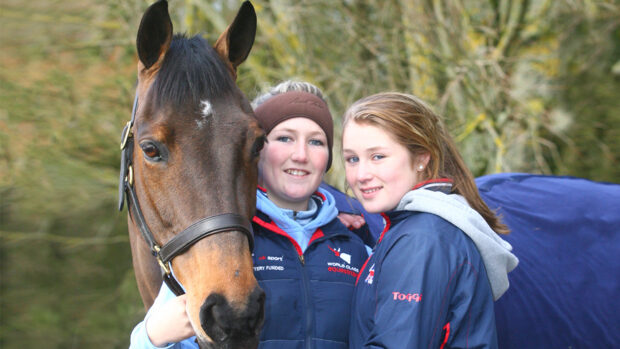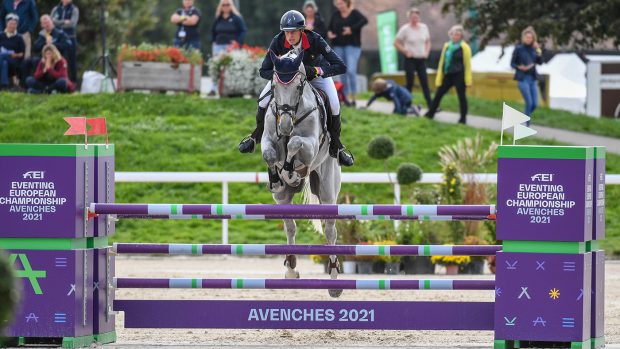First, the horse trots to a simple upright with a placing pole 9ft in front, and is asked to remain straight between the two fences already set up.
After that we can tackle the curves.
Concentrating on straightness, the horse must maintain the direction asked for by the rider without being distracted by the fences on either side. Your horse will not be ready to jump off a curve until he is confidently maintaining a line steered by the rider’s leg and guided by the hand.
Directing on a curve
Although the second element is on a curve, the initial approach must be straight: the rider must be looking to the next fence, and the curve can be asked for after take-off.
Balance through a turn is vitalfor a horse to be able to push off evenly with his hindlimbs and produce a balanced bascule. Do not underestimate the severity of this simple-looking exercise – it focuses entirely on the balance and control of the rider and the horse and quickly highlights many faults.
Key principles of this exercise:The horse will follow where the rider is looking provided the rider’s bodyweight reinforces this.
Looking where you are going is the first step towards redistributing your weight to help your horse turn. Secondary to this is putting your weight into your inside seatbone and heel, then letting your shoulders and hips naturally follow where your eyes look.
Test the importance of this sequence sitting astride and facing the back of a kitchen chair. If you just look one way, the chair will not move in that direction. If you weight the inside hip and foot, turning your whole body, the chair tips in the direction in which you are looking – notice how your outside leg automatically closes on the chair.
If you do this properly the chair should turn.
This exercise also confirms the importance of sitting squarely. If it¨s not working you’re probably not sitting straight!
Remember, if you can influence a chair, this is how much your horse may be compensating for your lack of straightness and balance.
Influence of the hand
Having steered the horse with your bodyweight, the hand should only need to indicate the direction and help create a subtle curve to the horse’s body.
By opening the inside rein as a “leading rein” and closing the outside rein to the neck, the horse will understand the direction wanted but not feel restricted by a fixed hand. Keeping an ¨elastic contact¨ is very important.
The leg and bodyweight should always be predominant in steering, or the horse’s focus will be on your hands, not on the approaching fence, which will restrict his confidence to create a natural bascule.
If the horse loses direction at this stage in the exercise, do not reprimand. This is a test of focus and concentration – he needs to understand where you are guiding him.


